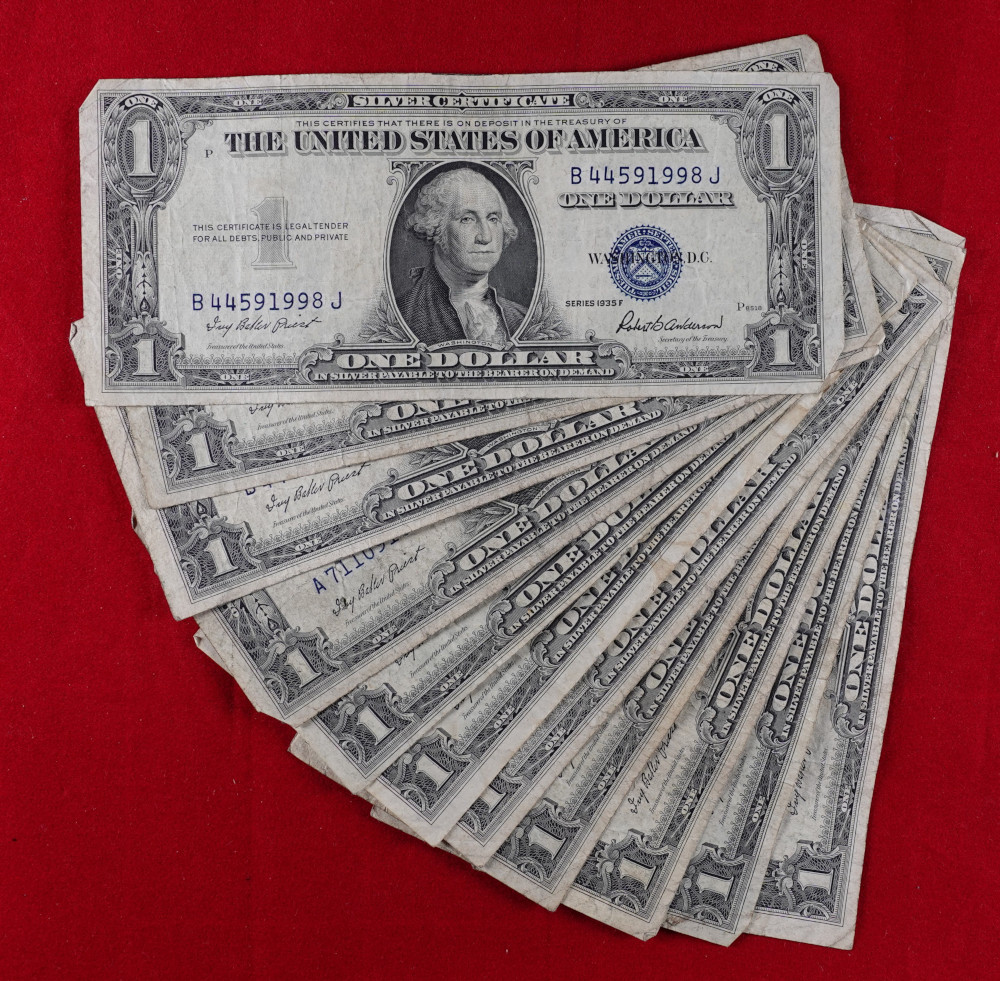Description
A silver certificate is a form of legal tender in paper currency issued by the U.S. government starting in 1878. Though it initially represented a specified amount of silver bullion, it began a long path in US history towards fiat currency by offering convenience. These certificates enabled individuals to invest in silver without needing to physically possess the commodity. Today, silver certificates are no longer redeemable for silver but can be exchanged for their face value in cash.
The larger-sized certificates, featuring portraits of notable Americans like George Washington and Abraham Lincoln, ranged from $1 to $1,000, while smaller-sized notes were available in lower denominations. The U.S. Treasury Secretary’s announcement in 1964 marked the discontinuation of silver certificates.
While silver certificates have not held intrinsic value since March of 1964 when they ceased to be redeemable for silver dollars, they still hold appeal for collectors and history enthusiasts. The certificates serve as collectible items with value beyond their face value, influenced by factors such as condition and rarity. For many, the allure lies in the nostalgic significance and historical context these certificates represent, acting as tangible artifacts from a transformative period in U.S. currency history. The certificates offer a glimpse into the past, serving as a time capsule connected to significant events in the nation’s history.

